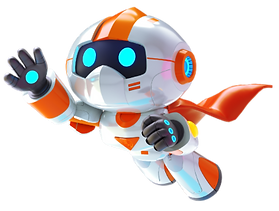
Scratch 101
Beginners Friendly | Block Based | Age 7-12 | 54 Lessons



Scratch is perfect for beginners as a block-based coding language. Kids can easily drag blocks to finish sequence. Animation and challenges also make the classes attractive for kids.


Unit 01
5 Lessons
31 Challenges
1.Familiarization with the Scratch programming platform, learn sequential execution and loop structures.
2.Learn about coordinates and events, understand the meaning of coordinates, and learn to use events to control the execution of code blocks.
3.Study branching structures, initially understand and apply conditional thinking.
4.Learn about cloning, and comprehensively apply the learned knowledge to control the original and clones to solve problems.

Unit 02
7 Lessons
65 Challenges
1.Master the technique of cloning by clicking on a character.
2.Differentiate the original and the clones, and control them separately using code.
3.Use event code to control the actions of the clones.
4.Control the clones using keyboard keys.
5.Utilize randomization tools to clone characters randomly and make the clones appear at random positions on the stage.
6.Understand and use broadcast code blocks, and grasp the concept of parallel execution.

Unit 03
7 Lessons
54 Challenges
1.Understand the concept of variables and private class variables, and master the creation and usage of variables.
2.Use methods such as key presses and clicks to change the value of variables.
3.Master the use of ask and answer statements.
4.Learn to use code in the sensing module to obtain information such as the character's position, size, and direction.
5.Use variables to create a timer.
6.Grasp the rules of conditional judgment and the parallel use of multiple conditional judgments.

Unit 04
7 Lessons
55 Challenges
1.Understand the concepts of logical judgment "and", "or", and "not true".
2.Use conditional judgments and logical statements comprehensively.
3.Learn and master the "repeat until" loop.
4.Learn and master the "wait" code block.
5.Master the basics of the pen, able to change the pen color, thickness, and draw simple shapes.
6.Understand the use of custom code blocks.

Unit 05
7 Lessons
55 Challenges
1.Master the nesting of conditional judgments and understand the selection structure of the code.
2.Understand string variables and master basic operations such as string concatenation.
3.Deepen the understanding of the basic concepts and characteristics of variables, and become proficient in calling variables.
4.Recognize the list data structure and master basic list operations: obtaining the value of an item in the list, adding items to the list, replacing the value of an item in the list, etc.
5.Understand the concept of traversing lists, master the methods of traversing lists, and apply these methods to count the number of specified items in the list.
6.Use the modulo operation to determine the parity of numbers.

Unit 06
7 Lessons
51 Challenges
1.Apply the method of traversing lists to achieve summation of list items.
2.Apply the method of traversing lists to find the maximum and minimum values in the list.
3.Master string-related operations: obtaining the number of characters in a string, determining whether a string contains a specific character, etc.
4.Understand and master the method of traversing strings.
5.Further master the creation and use of custom code blocks with parameters.
6.Combine the pen and custom code blocks to draw regular polygons and complex patterns composed of them.

Unit 07
7 Lessons
54 Challenges
1.Use flowcharts to express the computational process of a program, understand sequential and selection structures, and write simple code based on flowcharts.
2.Master the creation and use of custom code blocks with two parameters.
3.Understand the algorithmic thinking of the enumeration method: examining all possible outcomes of an event and verifying each possibility one by one;.
4.Master the use of the enumeration method to determine prime numbers.
5.Master the use of intermediate variables to swap data within a list.
6.Understand the bubble sort algorithm and master sorting using a program.

Unit 08
7 Lessons
51 Challenges
1.Recognize counting loop structures and condition-controlled loop structures through flowcharts, and write complex code based on flowcharts.
2.Master forward and reverse traversal of strings to implement palindrome string detection.
3.Understand the concept of pointers and apply them to reverse lists;
4.Master the operations of rounding up and down.
5.Understand, become familiar with, and master the binary search algorithm.
6.Integrate and apply all mastered content to create a project.


What Students Learned
Programming fundamentals
Spatial understanding
Conditional statements
Association and mental construction
Logical reasoning
Observation skills
Comparative thinking
Collaboration
Top-down thinking
Summarization and organizational skills
Analyzing and breaking down problems
Problem-solving skills
Abstract thinking
Decision-making skills
Abstract thinking
Analogical reasoning
Systematic thinking
Geometric thinking
Creativity
Ability to solve complex problems
Inductive reasoning from specific to general
Computational thinking


